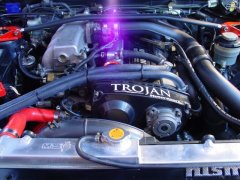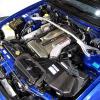Road tuning your R33 with PFC. How do you work around a PFC?
Announcements
-
Similar Content
-
Latest Posts
-
If you're really considering leaving it, a great question to ask is, is the magnet going to stick to the sump? The answer to the above is the same answer towards if I'd have any level of comfort leaving it... Personally, based on the cost of a motor if the magnet were to cause damage, I'd be fishing it out either way. Use the methods in here. It fit in through the plug hole, it'll come out. PS, get a small actuatable claw for a bore scope. OR if you know a vet, they have really cool controllable scopes with hooks on the end. Supposedly they're like playing a video game. Ask if they can acquire you one of their scopes... Engine oil after all is just a different type of lube right? Will only make it easier on the next dog or cat...
-
All other (Boolean) logic functions though, are just built on those blocks above. Which does give you a lot of functionality in logic. It is basing that on using thresholds with analogue signals like GTS alluded to. Not having things like timers will make it less useful for some of the ramp up logic you'd want, and again, on Haltecs capacity specifically, I'm not across anymore what you can / can't do with different tables. I'm assuming, with your logic you want to implement, not only do you want your timing safeties, you're wanting to be able to derive the duty cycle for your solenoid, to maintain I'm assuming 175PSi? Or are you using a standalone WMI controller to maintain the DC correct, and you just want the Haltech working out which fuelling maps you should be on?
-
It doesn't seem to follow revs. Oddly it seems to follow TPS a little bit from what I can see, but with some delay a bit. IE end of the graph, when he lets off throttle fully, pressure drops a lot, then slowly builds back up, but rpm is on a nice cruisey drop off. I do agree though, it seems very electrically.
-
By TurboTapin · Posted
I just try to entirely stay away from ladder now unless it's something basic maintained by electricians. Even then and to your point, it mostly ends up being blocks I wrote in structured text. PLC's are slowly going towards C, C++ and C#. I just wish Allen-Bradley would jump on the bandwagon. -
By TurboTapin · Posted
All of them are missing. You do not get much done with just AND, OR and NOT unfortunately. Ecumaster for example has a text based editor with at least 60+ math and logic instructions.
-








Recommended Posts
Create an account or sign in to comment
You need to be a member in order to leave a comment
Create an account
Sign up for a new account in our community. It's easy!
Register a new accountSign in
Already have an account? Sign in here.
Sign In Now